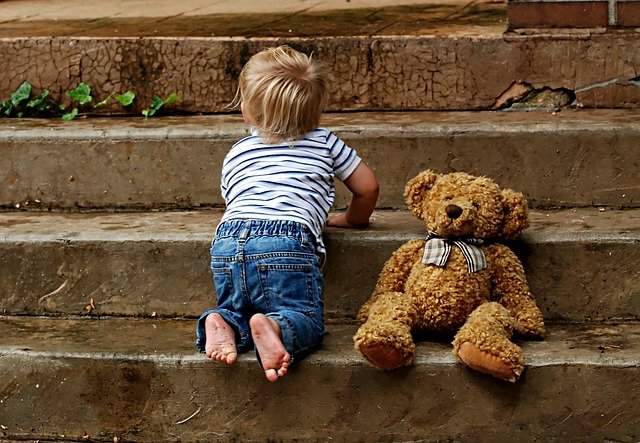By Patricia Johnson and Sacha Powell
Have you ever wondered what a musical score would be like if it tried to capture the daily pace, rhythm and activity of a baby or toddler room: fast and frantic like The Flight of the Bumble Bee; slow and lilting like a soothing lullaby; or perhaps a little of both?
Research tells us that babies’ and toddlers’ brains are developing more quickly than at any other time during a human’s life. Things are happening at lightning speed in those little heads: around one million new neural connections per second are forming in young brains (Harvard CDC, 2022). But learning builds gradually over time and “nurturing care for the mind is critical for brain growth” (CDC, 2022).
Babies and toddlers benefit from “having freedom and time to play”, explore, rest and reflect in order to make sense of the world around them and create strong bonds of attachment (Birth to 5 Matters, p10). This doesn’t mean leaving them to their own devices, especially the quiet babies and toddlers who may sometimes attract less attention from adults.
Babies and toddlers “learn and develop well in enabling environments” with care, teaching and support from “adults who respond to their individual interests and needs and help them to build their learning over time” (EYFS Statutory Framework p6, our emphasis).
When most babies and toddlers are feeding from the breast or the bottle, they suck and swallow at their own pace and sometimes rest. They stop when they have had enough, or to communicate in different ways. In this way, they are showing adults that they can control their own needs at that minute in time, and the rhythm of their meal.
Many babies enjoy spending some time as onlookers too, soaking up and contemplating all they can see, hear, smell or feel. Sometimes adults might stand back and mull over what a baby or toddler is doing, feeling, seeing, hearing or perceiving around them. Sometimes then stepping in sensitively to support and extend play or to offer comfort and reassurance.
“Respectful caregiving requires respectful interactions…” which includes “being patient and giving the child time to respond and participate.”
(Birth to 5 Matters, p13)
New research by Alison Clark (2022) has indicated that slowing down has many benefits, including time for adults and children to really observe and think about what is happening; and to respond to each other in a considered and meaningful way.
What opportunities exist for the babies and toddlers in your setting to influence the pace and rhythm of their mealtimes, play, care routines, welcome or departure?
“Settings should ensure physical caregiving is given sufficient time and thought to create situations that are valuable and enjoyable for both child and practitioner.“
(Birth to 5 Matters, p12)
Researchers who studied infant and toddler spaces in early years settings in Australia discovered that care moments can take up 80% of the day (Bussey, Peryman & Martinez, 2021). This finding emphasises the fact that patience, and tuning into babies and toddlers’ rhythms should be part of a whole approach, which incorporates these important care and learning experiences.
What is the pace and rhythm of your room like and who or what conducts the musical score? What are the sounds that greet babies and toddlers when they arrive? What dictates the speed of their day (and yours)? Is there time and space for calmness, stillness, slowness and quiet contemplation?
Being conscious about the pace of life and work can be very beneficial for adults too.
“Slowing down lowers stress and blood pressure, enhances decision making and other cognitive functions, and restores emotional equilibrium. In allowing ourselves to experience the present – rather than rushing toward the future – we become more attentive to what is happening around and within us.”
(Stewart, 2018)
When you are the primary carer, the key person in the lives of children throughout their early years, you shoulder a huge responsibility for parents’ “most precious things” (Goouch & Powell, 2013). Can you make time to slow down and boost your own well-being?
References
Bussey, K., Peryman, B. & Martinez, S. (2021). Respectful attuned attachment relationships and care. The First Years: Nga Tau Tuatahi. New Zealand Journal of Infant & Toddler Education, Volume 23, Issue 2, pp.23-28. www.firstyearsjournal@auckland.ac.nz
CDC (2022). Early Brain Development & Health.
Clark, A. (2022). Slow knowledge and the unhurried child: time for slow pedagogies in early childhood education. London: The Froebel Trust.
Department for Education (2021). Statutory framework for the early years foundation stage. Setting the standards for learning, development and care for children from birth to five.
Early Years Coalition (2021). Birth to 5 Matters. Non statutory guidance for the early years foundation stage. St Albans: Early Education.
Goouch, K. & Powell, S. (2013). The Baby Room. Principles, policy and practice. Maidenhead: Open University Press.
Harvard Center on the Developing Child (2022). Brain Architecture.
Stewart, S.A. (2018) Slowing Down as the World Speeds Up. Slowing down enhances health and well-being. Psychology Today, 17 December 2018.

